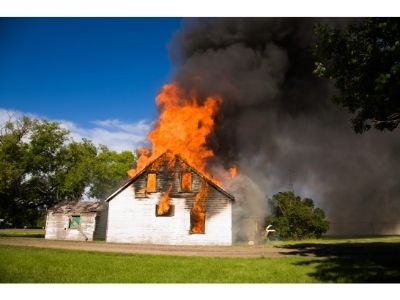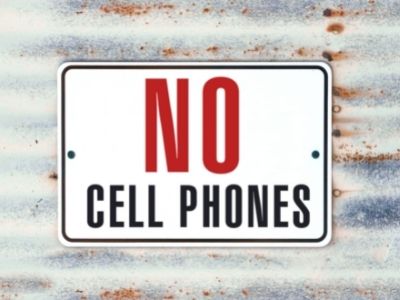There are lots of great experiments that we teach our children about static electricity – whether they get to use a Van de Graaff generator or simply rub a balloon on a sweater and make their hair stand on end. But, we don’t always consider the way that static electricity can play a part in fires. Just how dangerous is static electricity and what can we do to make it safer?
Static electricity can cause fires. However, the presence of static electricity alone isn’t enough to create a fire. Instead, you need some sort of spark and a combustible element in the vicinity of the static charge.

It is difficult to determine how many fires involved static electricity because there are so many other elements and various situations where it can play a part. Still, anyone exposed to static electricity regularly must take appropriate precautions.
Because there are so many different situations and risk factors involved here, it is important to understand the issue in more detail. This means a greater appreciation of the following.
- How static electricity causes fires
- The types of fires static electricity is responsible for and key locations
- The roles of accelerants and flammable materials in these fires
- How to reduce the risk of static electricity fires in work environments
- The risk of static electricity fires at home.
Table of Contents
How does static electricity cause fires?
Static charges can occur when friction or atmospheric conditions cause a reaction between positive and negative charges. The imbalance leads to the static feel and the electric charge we can feel.
Often this is a temporary phenomenon but you can also get a more sustained static atmosphere depending on the environment, such as in some industrial settings. This static charge can spark and create little bursts of energy.
On their own, they aren’t of much concern. However, if there is a combustible element in the vicinity, the charge may be enough to set it alight. The type of combustible material and its volume will then determine the extent of the fire or explosion.
What sort of materials act as accelerants in static electricity fires?
You will usually find that static electricity fires occur when there is a significant volume of a flammable liquid nearby, such as gasoline or turpentine, or where there are chemical fumes in the air with the static electricity.
The spark from the static discharge sets these agents alight, which will then set off the fire or explosion.
This is why it is important to be aware of static electricity risks in areas of fuel storage, studios that use a lot of solvents, gas stations, and industrial facilities.
How common are static electricity fires?
It is hard to tell.
The nature of the chain reaction is why there isn’t much definitive data on the number of fires caused by static electricity.
The charge from the static is a starting point for a bigger problem and investigators can’t always be sure that it was a static spark that was at the root of the incident.

For example, if a gas station explodes, we know that the fire was caused by the highly dangerous gasoline in the pumps and/or the tanks of the cars.
But, we don’t always know if the initial spark came from a lighter, lit cigarette, or a freak accident with static electricity. Surveillance footage from nearby cameras may help if the footage survives.
How dangerous are static electricity fires?
Static electricity fires can be highly dangerous if there are chemicals present or a large volume of flammable liquid.
At this point, the static electricity element isn’t the problem and you are dealing with a risk of a fire with rapid acceleration and a risk of explosions. Gasoline, turpentine, and other similar liquid can ignite very quickly and cause extensive damage.
While it is difficult to tell how many gas station fires were caused by static charges, the stats here indicate how dangerous static electricity gasoline fires can be.
Data from the National Fire Protection Association shows that there were 4,370 service station fires in 2018 alone.
The report shows that 56% of these came from vehicle fires due to mechanical failures or “malfunctions”. 16% were classed as “outside, non-trash, and other fires”, which may account for some of the static fires. Three people died, 43 were injured, and there was significant property damage.
Will using a cell phone at a gas station cause a fire?
There is a common belief that we aren’t meant to use cell phones at gas stations because they generate static electricity and this could cause a fire.

There is no evidence for phones causing static electricity that then led to a gas station fire. However, there is a concern about sparks from electrical equipment and exploding batteries.
How common are static electricity fires at home?
You may be reading all of this about static electricity explosions in gas stations and plants and wondering what this means for your safety at home.
Static electricity can build up in various situations around the home – as demonstrated with that balloon and sweater trick. Woolen materials are great for generating this necessary imbalance between positive and negative charges.
You can also generate a static charge on a TV screen after switching
So, is there any risk of static charges in the home causing fires? The good news is that this is very unlikely because while you may have a small spark, you probably don’t have the accelerant needed to create the fire.
Can static electricity cause a fire in a blanket?
One of the biggest concerns about static electricity fires at home is that you will create a strong static charge within a woolen blanket on a bed at night and that this could ignite.
Any small spark generated by this static charge isn’t going to be powerful enough to set a dry material like your bedding on fire.
There is no flammable substance between the static and the fabric, such as the gasoline at the gas station or the chemical fumes in an industrial plant.
Are there any cases of static electricity fires in the home?
There are some very rare incidents where fires and chemical burns in the home were attributed to a reaction between static electricity and a flammable agent.
A report published in 2019 from the Annals of Burns and Fire Disasters talks about the “first documented case of static electrical ignition of a substance causing facial burns”. T
he subject sprayed a mold remover in a bin, reached inside to spray the bottom, and receive a flash burn to their face and arm. It was concluded that she created a strong static charge by rubbing the bin and that the charge had no earth route because of her rubber-soled shoes.
Over in China in 2014, a man received second and third-degree burns due to static electricity charges from his clothes. The burns actually came from when the spark ignited gas in the building and caused an explosion, not from the static.
This emphasizes the point that there isn’t much of a risk from general static charges unless you are already in a dangerous environment. It seems that anything could have ignited the gas.
How to prevent static electricity fires.
The case of the woman with the cleaning agent and rubber shoes highlights the importance of wearing the right clothing and footwear when you know there is a static electricity risk.
OSHA guidelines state that where appropriate, employers must provide protective footwear that eliminates the risk from electric or static electric charges, such as static dissipating boots.

Additional anti-static coverings may also be required depending on the setting.
Grounding control measures are essential so that the charge has somewhere to go and doesn’t build up in clothing or within the body. Simple changes to the flooring and the use of fixtures like non-metal door handles can make a difference.
It is also important that employers work to prevent the build-up of static electricity in a work environment as much as possible.
This could come down to simple changes in atmospheric conditions, such as making sure that there is a little moisture in the air. Static thrives in drier conditions while slightly damper air helps the charge disperse.
They can also make sure to maintain and replace equipment regularly where the parts may be at risk of creating too much friction and static charge.
Finally, there must be no flammable materials anywhere where this is a strong risk of a high static charge. This means no storage of fuels or solvent, no gas canisters or gas-fired machinery, and no other forms of an open flame.
Of course, this also means that no one should ever smoke in any of these areas.
Can static electricity cause fires?
To summarize, static electricity can be highly dangerous when in the presence of flammable material and a potential spark. The static charge and combustible elements can react violently to create substantial fires and explosions. Always take care to follow appropriate guidelines when working in facilities with a high risk of static electricity.